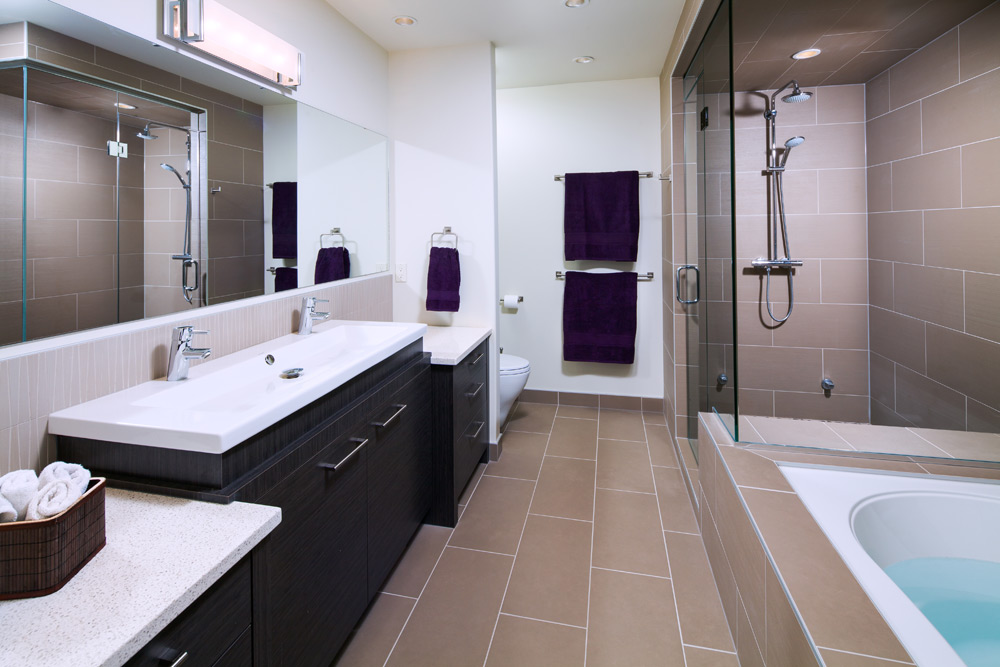Grey water is the drainage from sinks, bathing fixtures and the laundry, but does not include toilets. Grey water is only lightly contaminated with soap residue, food waste and soil, so it can potentially be easily recycled for some uses on site. It generally does not carry significant quantities of bacteria or parasites that may communicate disease. It does, however, contain hair and grease that must be removed before reusing.
In dry climates, and where the building site has a large garden area, the best potential for grey water is to use it for irrigation. This will not only offset some potable water costs, but it will reduce loads on the sewer or septic tank system. Grey water typically also contains some nutrients that are good for plants.
Although grey water systems can save up to 80,000 liters of water a year (for a typical family of four) and in wide use throughout the world, they are not permitted inside the jurisdiction of the city of Calgary at this time.
Plumbing Requirements:
The drains must be separated up to the point where all of the grey water fixtures are connected to the main stack. At this point the stack is fitted with a diverter valve that sends grey water to a tank and filter. The toilet line is then connected in after the grey water diverter. The diverter allows grey water to be sent either to the sewer or the tank and filter. A grey water heat recovery unit may also be installed at this point.
Filtering and Requirements:
A separation tank is recommended immediately after the grey water diverter. This tank allows the soap and grease to float and slowly break down. It also allows heavy soil and grit to settle to the bottom. This tank will have to be periodically cleaned to remove hair and debris that does not decompose. The tank must be sealed and vented to the outdoors, and should be sized by a grey water system expert. A sand filter is usually the final stage of filtration. A standard swimming pool sand filter can be used. It will periodically require a change of sand. Complete, packaged grey water treatment systems that are slightly larger than a domestic water heater are also available.
The Irrigation System:
After the sand filter the grey water can be sent directly to a gravity fed sub-soil irrigation system similar to the disposal field for a septic tank system, only smaller. Perforated small-diameter buried pipe can also be used. A geotextile fabric to prevent roots from growing into the pipes is also recommended. Alternatively a small pump chamber can be used to lift the treated grey water to the buried irrigation system. Micro-pore irrigation systems with thin tubes or porous rubber hose should not be used with grey water because they plug easily.
Being Grey Water System Ready:
As grey water systems are not currently allowed in our district, it is a good idea to separate the plumbing drains as described so that these systems can be added later. Be sure that the main stack connections will be accessible for later retrofit.


